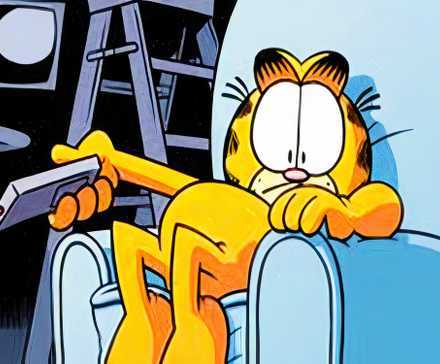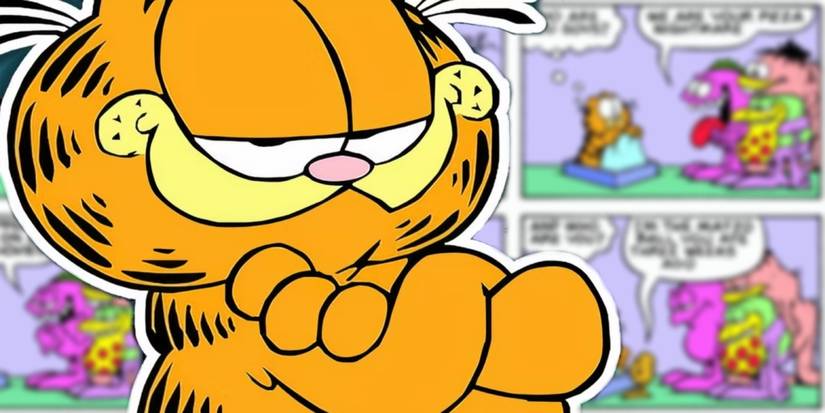An early Garfield comic featured the cartoon cat’s unique chronicle of the “History of Dogs,” a hilarious take on the origin of the canine species, which held to emphasize the role of Garfield’s self-centered perspective on the humor of the strip, which was still evolving at the time of the storyline’s publication.
“Garfield’s History of Dogs” was published at the start of September 1980, and ran for almost a full week. This sequence of comic strips remains amusing even decades later, a testament to the timeless humor of creator Jim Davis.
Moreover, it offers an insight into what made Garfield such a popular character, one who has gone on to have worldwide success as more than just a comic, but as a literal icon – all of which was built on the foundation of the cat’s unique personality.
What Makes Garfield’s “History Of Dogs” Such A Monument To The Strip’s Early Success
First Published: Monday, September 1 Through Saturday, September 6, 1980
In “History of Dogs,” over the course of six three-panel strips, Jim Davis takes readers on a tour of dogs’ advancement, from the first proto-dog to crawl out of the ocean, right up through contemporary canines, as represented by Odie – all from Garfield’s perspective, meaning that the very loose interpretation of real history presented in these panels is all part of the joke. From the scale-covered “first dog” immediately being netted by the “first dogcatcher,” up to the invention of “the first fire hydrant,” Garfield’s mix of bias and naivety intentionally skew the facts here, adding to the comedy.
Far from a depiction of real history, the “History of Dogs” sequence of comic strips is an early example of one of Jim Davis’s best comedic tactics – the flight of fancy.
Readers will delight in the anachronism of a dinosaur stomping on an early Stone Age hunting dog, and the tail of “Bonzo Wag,” the dog who invented tail-wagging – and slobbering, which readers are told “didn’t go over so well,” with prehistoric humans. As with most Garfield jokes, the simplicity of the punchlines is part of the joy; far from a depiction of real history, the “History of Dogs” sequence of comic strips is an early example of one of Jim Davis’s best comedic tactics – the flight of fancy.
Garfield’s “History Of Dogs” Was A Sequel To The Strip’s Previous “History Of Cats”
First Published In 1979
Before the “History of Dogs” appeared in newspapers in 1980, Jim Davis began with “Garfield’s History of Cats” the year before. This established the formula that “Dogs” would subsequently follow, and in the process provided an early example of Davis’ ability to elaborate on a joke over the course of several days. Ongoing storylines would later become increasingly prominent as Garfield continued, and both “History” lessons should be noted for their role in developing that tendency during the strip’s first few years of publication.

Related
10 Hilarious Garfield Comics About Television (And Garfield’s Love/Hate, But Mostly Love, Relationship With It)
Garfield quickly established himself as a devoted TV lover, and remote hog, as these early strips show the evolution of the orange tabby’s obsession.
“History of Dogs” is, in a sense, a refinement of the joke, showcasing Jim Davis’ rapid development as a humorist during the primitive years of Garfield’s run. More than that, though, it is evidence of a crucial aspect of Garfield’s success – more than just the strip’s main character, the eponymous orange tabby functioned as its focal character. That is to say, the humor of Garfield is most frequently rooted in Garfield’s own perspective. While at times, Jon Arbuckle’s internal narrative is also present, the “voice” of the strip is predominantly Garfield’s.
“History Of Dogs” Is An Example Of How Garfield’s Perspective Is Essential To The Strip’s Humor
The importance of Garfield’s POV to the “History” bit – and in turn, the strip as a whole – is evident right from the title of both sequences: “Garfield’s History.” This stresses that these are Garfield’s own ideas and interpretations; part of the joke is that, as human-like as Garfield might seem, his understanding of world events, from the past to the present, is necessarily limited, humor that is parlayed by the fact that the character discourses so confidently, despite his minimal actual knowledge.

Related
“If You Force Something, Readers Will Pick Up on That”: Garfield Creator Jim Davis Disagrees with Pretty Much Every Author’s Favorite Writing Advice
Most authors say that writing every day is key to their success; one stand-out exception is Garfield creator Jim Davis, who prioritized inspiration.
Garfield’s humor repeatedly relied on this aspect of the cat’s personality over the years; an amusing over-confidence that often led Garfield to some comedic foible, which he never learned any concrete lesson from. This sitcom-esque quality of Garfield’s comedic style is part of what made it endure for decades as a comic, helped Jim Davis expand his comic into a multimedia empire, and turned Garfield himself into one of the most recognizable figures in pop culture, success that was prefigured by the success of the strip’s “History” sequences of comics.

Created by
Jim Davis
First Film
Garfield: The Movie
Latest Film
The Garfield Movie
First TV Show
Garfield and Friends
Latest TV Show
Garfield Originals
First Episode Air Date
September 17, 1988
The Garfield franchise centers around the lazy, lasagna-loving orange cat named Garfield, who spends his days avoiding work, eating, and making sarcastic comments about life. Created by Jim Davis, Garfield’s humorous observations on human (and feline) nature have been a staple of pop culture since the comic strip’s debut in 1978. The franchise has expanded into television shows, films, and a variety of merchandise, making Garfield one of the most recognizable and enduring characters in comic history.



